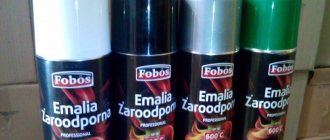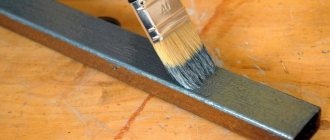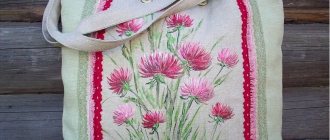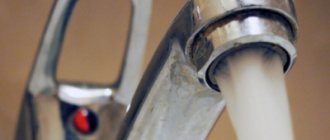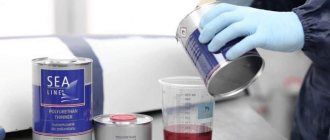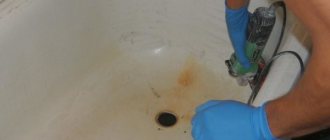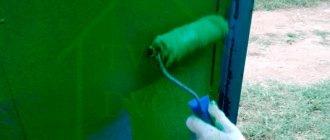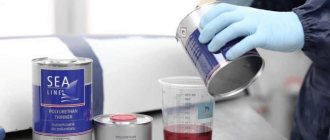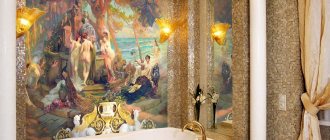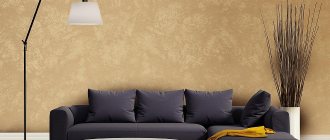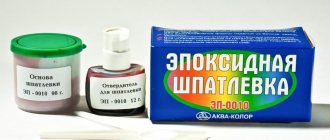When painting products made from natural raw materials, a competent choice of composition is important. To do this, they turn to online stores, where they have not only “classics” for brushes and rollers, but also paint in cans for wood. Paint and varnish materials (paint and varnish materials) are more expensive than conventional compounds, but the quality of application and ease of use are worth giving them preference. It is recommended that you familiarize yourself with how to apply enamel spray to a wooden product.
The benefits of spray paint
Perfect for painting small parts, including those with complex geometric shapes. Elements that cannot be reached with a regular brush can be painted well with a spray.
- Wide range of colors and decorative effects.
- To apply the aerosol, just shake the can vigorously (brushes and rollers are not required for painting).
- The aerosol lays down smoothly and without smudges (if sprayed correctly).
- Economical consumption.
- The compact format of the can allows you to conveniently transport and store the paint.
- Leftover spray paint can be reused. The spray retains all its properties in a closed container for a long time.
- The aerosol is ideal for creating stencil designs.
- The spray applies to fabric and leather, which is widely used in room decoration.
- The aerosol is also used in auto mechanics when it is necessary to paint small parts of the car, including chrome parts.
- The paint does not need to be thinned or stabilized. The product is immediately ready for application to any surface.
- The coating demonstrates high resistance to temperature, moisture and everyday wear.
- Paint applied in a thin layer dries quickly. In just 20 minutes. the surface is ready for spraying the second layer.
- The aerosol allows you to achieve a smooth color transition.
Video on how to properly sand wood before painting
During renovation work, the question often arises: how to remove paint stains on wood? Coping with the resulting unevenness can be quite difficult, so the best solution would be to follow the painting technology. If you follow simple recommendations, you can paint wood beautifully and neatly. At the same time, no streaks or unevenness appear on the surface. The paintwork material lays down in a nice, uniform layer.
Photo 3. Applying primer to the surface of wood
Previously, ordinary rectangular brushes were cut in circles by the painters themselves. They know very well how such measures help reduce paint consumption and ensure uniform surface painting without smudges or streaks.
Before you begin the painting process itself, you need to complete a certain preparatory step. It occurs according to the following algorithm:
Experienced cyclists know that long-term use of a two-wheeled friend leads to such sad consequences as chips, scratches or rust. But this is not a reason to abandon your bike or look for a replacement. It is enough to properly paint the bike and then it will serve you for many years. We will talk about how to correctly carry out this process in the next article.
Features of the selection of aerosol paint
Professionals recommend choosing aerosol paint depending on the type of material being painted. It is better to paint plastic, glass and wood with acrylic-based compounds.
To paint metal surfaces, the aerosol paint must contain anti-corrosion components and aluminum additives. For ceramics and enameled surfaces, it is better to choose a spray that contains epoxy resins.
Aerosol paint, like most paints and varnishes, is applied in 2-3 layers to obtain a pronounced effect.
One can is enough for a maximum of 2 square meters. m of surface, so you need to immediately calculate the required number of cans.
Tips for choosing an aerosol
When choosing a can of acrylic paint, first of all you need to read the instructions. The manufacturer informs the buyer about:
- surface material on which the coloring composition can be applied;
- paint consumption per 1 m²;
- composition;
- how long it takes for the layer to dry.
In order not to make a mistake with the color, you can use the manufacturer’s palette catalog.
You can choose acrylic paint with special effects:
- glossy, matte or metallic sheen;
- texture of various materials;
- imitation of the hammer effect;
- anti-slip;
- rainbow stains or mother of pearl;
- aging objects;
- fluorescent shine, etc.
Types of aerosol paints
- Metal spray is divided into 3 categories: standard (used for painting parts), double (a primer is added to the paint) and triple (with anti-corrosion components).
- Heat-resistant spray paints contain flint and oxygen to protect the surface from high temperatures. Heat-resistant compounds demonstrate high resistance to moisture and aggressive chemicals. Furnaces, boilers, concrete, ceramic and wooden bases in rooms with high humidity are suitable for treatment with heat-resistant aerosol paints. This kind of enamel is used during construction work.
- Aerosols for plastic are used both in auto repair shops for painting individual elements of the car, and for decorating household items. Acrylic sprays (polymer) contain a primer, allowing you to achieve an enamel effect when painting. Compositions based on polyurethane resins give the surface a glossy shine. Structural aerosols smooth out surface irregularities, giving elements a smooth appearance. Polyvinyl chloride sprays are used when painting outdoor decorative items (the paint does not fade in the sun).
- Decorative paints (RAL marking) allow you to achieve different texture effects. Decorative sprays are ideal for processing glass, as well as when working with stencils.
First preparatory stage
You can repaint furniture using a brush or roller, or using spray paint. The second method is much faster and provides an even coating. However, some of the paint inevitably gets sprayed and lost. When using paint, you will only need as much as needed for coloring. However, the method requires great care and a certain skill. How to paint a kitchen set with your own hands is demonstrated in the following photo.
Furniture is the part of the interior that changes least often. This also applies to kitchen furniture. You can change the curtains at least once a month, re-glue the wallpaper or paint the walls at least once a year, but cabinets and tables are designed to last for a dozen or even more years and are expensive to replace.
Unfortunately, the appearance of kitchen cabinets is lost faster than the furniture becomes unusable, and in order to save the situation, you have to resort to various methods of restoration. Painting kitchen facades with your own hands remains the simplest and most popular method.
In fact, waterproof paint also washes off with every wash. However, this does not happen so quickly: visible abrasion is observed no earlier than after 500 cleanings.
This is how the article turned out, I think it was useful, sincerely yours, AUTOBLOGGER.
Actually, all the tools, it is advisable to prepare them before the process. What else I would like to note is that it is advisable to paint indoors, where there are no gusts of wind and dust (it is advisable to clean up before the process). Because when painting, dust can settle on the surface, which we don’t want.
Actually, as usual, we need to clean the surface to be painted, degrease it, then prime it and then paint it. That's why:
Aerosol paint application technology
Before using spray paint, craftsmen recommend purchasing respiratory protection to prevent volatile components from entering the lungs during work.
- Eyes should also be protected with goggles, and hands with gloves.
- It is advisable to prepare the surface for painting: remove dust and dirt, degrease the element and apply a primer.
- Surfaces located next to the object to be painted must be covered with newspapers.
A rag or rag will come in handy to quickly remove traces of fresh paint from the floor or walls.
Before spraying, the can must be shaken dynamically; the paint lays down in an even layer and dries quickly. In just 20 minutes. You can apply a second coat. Spraying is carried out from a distance of 25 cm in calm weather, away from sources of open fire, and the paint itself should not be stored under the sun.
Primer stage
Experts recommend painting your bike using a spray can rather than a brush. The fact is that the spraying method is most effective in this case, and it is unlikely to be possible to carefully apply paint with a brush.
drawing
man painting a bicycle
Kvartblog once experimented with a Frost stool: we compared the result of painting using the technology and skipping different stages. It turned out very interesting, the result is here: Experiment: how we painted Frosta.
If you want to restore furniture or just admire an original object in place of an old bedside table or table, paint is an excellent material. With its help, it is easy to implement many decor ideas with minimal expenditure of money, time and effort.
You can paint large areas with a large brush, then finish more difficult areas with a smaller brush. In many cases, it is convenient to use a sponge: dip it in paint and apply it to the furniture using point-to-point movements. This way the structure will be porous, but without streaks from the brush. A small paint roller will also make the texture more pleasant.
TOP manufacturers of aerosol paints
- Aerosols from Colomix are used for processing ceramics and plastics.
- Champion Color spray is used when working with metal.
- To paint a bathtub, it is recommended to purchase brands New Ton, Kudo, Decorix.
- Among the universal paints, MOTIP is popular, which is suitable for painting wood, concrete, glass, stone and plastic. The cost of a can ranges from 120 rubles. up to 1200 rub.
- Kudo and Spectrum sprays are heat-resistant (most often used for painting metal radiators, boilers, stoves and barbecues).
Aerosol paints are deservedly in great demand both among beginners and among professional decorators. It is important to choose the right spray and follow the instructions on the can.
The nuances of working with wood
Natural wood surfaces require special protection from atmospheric factors: precipitation, temperature fluctuations, sunlight, etc.
If you leave a wooden base without a protective coating, it may delaminate, dry out or rot. Typically, alkyd and oil enamels are used to create a barrier against the effects of negative environmental conditions.
Painting wood using aerosol cans is becoming increasingly popular.
They have earned such attention from craftsmen due to their easy application, uniform distribution of paint on wood, absence of drips, speed of drying and the absence of the need to use additional tools.
In addition, the need to look for wood coatings on sale has disappeared, since the cans are usually universal and are perfect for such surfaces.
Photo of spray paint
Mistake #1: Painting unprepared walls
What to do: the easiest option is to take more. As a last resort, you can return the unopened can to the store or leave it “just in case” - touch up the places where the paint will peel off over time. On cans of paint they always write what area the volume is designed for - pay attention to the numbers. Keep in mind that if you paint the surface in two layers, the area will double.
What to do: choose one painting option - vertical or horizontal - the paint will apply evenly, and the painting will not look awkward due to chaotic strokes. When painting in several layers, you can alternate methods, for example, paint the first layer vertically, the second horizontally.
Using the right brush or roller is just as important as choosing your paint. And this is not a matter of taste. In order to paint the wall evenly, you need to purchase a couple of rollers and a brush. You will be the first to “roll” the surface, and use a brush to paint corners and hard-to-reach places.
Alkyd enamels
They consist of alkyd resins, pigments, various additives and solvent. They can be applied to almost any substrate. After drying, they create a durable coating that reliably protects the base from the effects of water, alkalis and can withstand wet friction. However, this coating has low vapor permeability, which is critical for “breathing” wooden surfaces, from which it often peels off. The disadvantages of alkyd enamels include toxicity and a very pungent odor both during operation and during drying (12 hours or more).
Dulux Trade High Gloss (UK) Alkyd gloss paint
To obtain the orange color RAL 2008, we used the appropriate Extra Deep base and tinted it twice: once using a Tikkurila machine (this is exactly the equipment that was in the store), the second using the “native” Dulux. The difference in price turned out to be quite noticeable - 40 and 555 rubles. respectively. The properties of the two enamels differed in approximately the same way.
When tinting on a “foreign” car, the result was a translucent composition of intense orange color with a liquid consistency. And although the coating came out smooth and mirror-glossy, each layer was thin and translucent - covering the structure of the wood, the enamel did not paint over the dark squares even after four layers.
Tinting on a Dulux machine gave a completely different result. Thick thixotropic enamel was evenly distributed over the surface, spreading across it and almost immediately hiding brush marks. Even the smell during operation was less than in the first case. The black squares were painted over with two (!) layers of enamel. The coating is smooth, mirror-glossy, without drips or brush marks.
- Tinting: there are four bases (Light, Medium, Deep, Extra Deep), which allow you to more accurately achieve the desired color. Enamels in bright white and black colors are offered separately.
- Consumption: 1 liter covers up to 18 m² in one layer.
- Drying: before applying the next layer – 16–24 hours.
- Packaging: metal cans of 1; 2.5 and 5 l.
- Price: from 286 rub. for 1 liter of Extra Deep base (for obtaining rich colors) up to 1,716 rubles. for 5 liters of Light base (white, for pastel colors).
